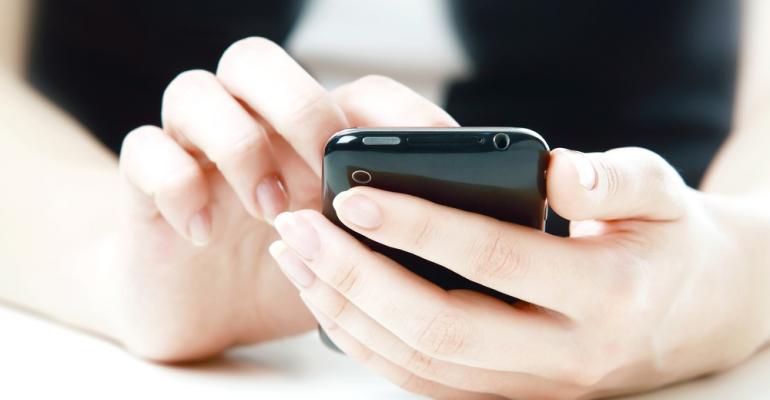
Today's guest post is brought to you by Casey Cote, Omnience's CEO
Picture this: At one of your key marketing events, the speaker is building an airtight case for why attendees need to invest in certain innovations that your company just happens to offer. Dazzling slides roll by in the well-crafted presentation. You scan the audience, expecting to see rows and rows of people eagerly awaiting the next brilliant point. But many aren’t looking at the slides, the speaker, or their notepads. Instead, they’re staring intently at—you guessed it!—their smartphones.
As mobile devices become ubiquitous, lots of people are looking at the ongoing problem of event attendees being distracted by technology, and there are many articles suggesting ways to deal with the problem. Most of the strategies fall into three camps:
1. Request cooperation. The organization and the speakers ask attendees to wait until breaks to make calls, check e-mail, text, tweet, and surf. Then, during sessions, individual speakers can either ignore the policy’s violators or use their own techniques to deal with them. Some professional presenters have humorous ways to say “Please put down your phone”; other speakers quit talking or walk toward the offender. My problem with this strategy: It's as futile as tilting at windmills. In today’s digitally connected world, people are increasingly bonded to all the trappings of mobile devices. They are untethered from their desks, yet tethered to a constant stream of attention-grabbers.
2. Ignore the multitaskers. Pragmatic event sponsors know that only draconian, counterproductive measures (such as creating no-Wi-Fi zones at the venue) will change the behavior of guests addicted to their smartphones. So they take an ostrich approach to the situation. The risk here is that distracted attendees will miss valuable content—and worse, their behavior may distract people sitting nearby.
3. If you can’t beat them, join them. I’m in this camp. Turn the “enemy” into your ally. Fight fire with fire. Use mobile as a channel that’s reinforcing the speakers instead of competing with them. By giving attendees robust mobile event apps, you can maximize opportunities for engagement and content distribution before, during, and after face-to-face events. Mobile apps can open doors for creativity at the event via surveys, contests, discussion hubs, networking, and social media interactions.
As an extension of your messaging and communications processes, the mobile app for attendees promotes engagement throughout the lifecycle of the event. Mobile becomes another channel for delivering content and capturing actionable information—thereby helping you determine and validate the ROI of key events.
By the way, most of what you’ll read about mobile event apps focuses on the attendee’s experience. The other side of the equation is largely ignored: What about an enterprise version of the mobile app for the “experience makers”—the sponsor’s event planners, product managers, content owners, sales reps, speakers and partners? Yes, they deserve powerful capabilities, too, to tap the mobile channel for all its value.
Casey Cote is the chief executive officer for Omnience. Joining the company in 1995, Casey established its strategic direction as an industry leader in marketing event management and as a technology innovator. He launched initiatives that made the company a pioneer in applying technology to the challenges of managing a large portfolio of events. Casey is also actively involved in managing customer relationships and directing the company’s expansion into new markets. Prior, Casey managed forecasting and budgets at Sprint.






